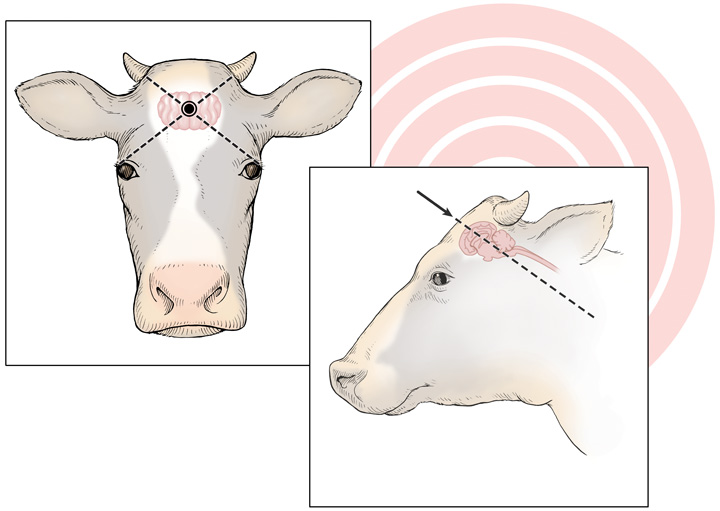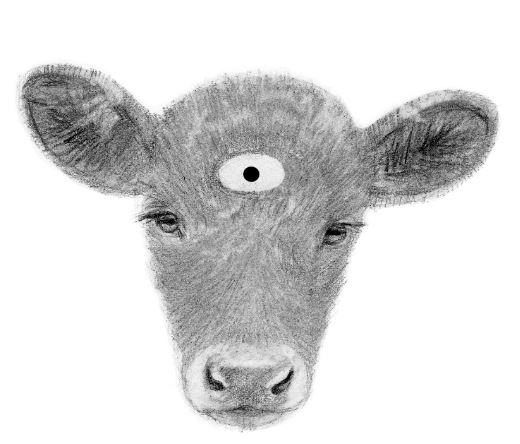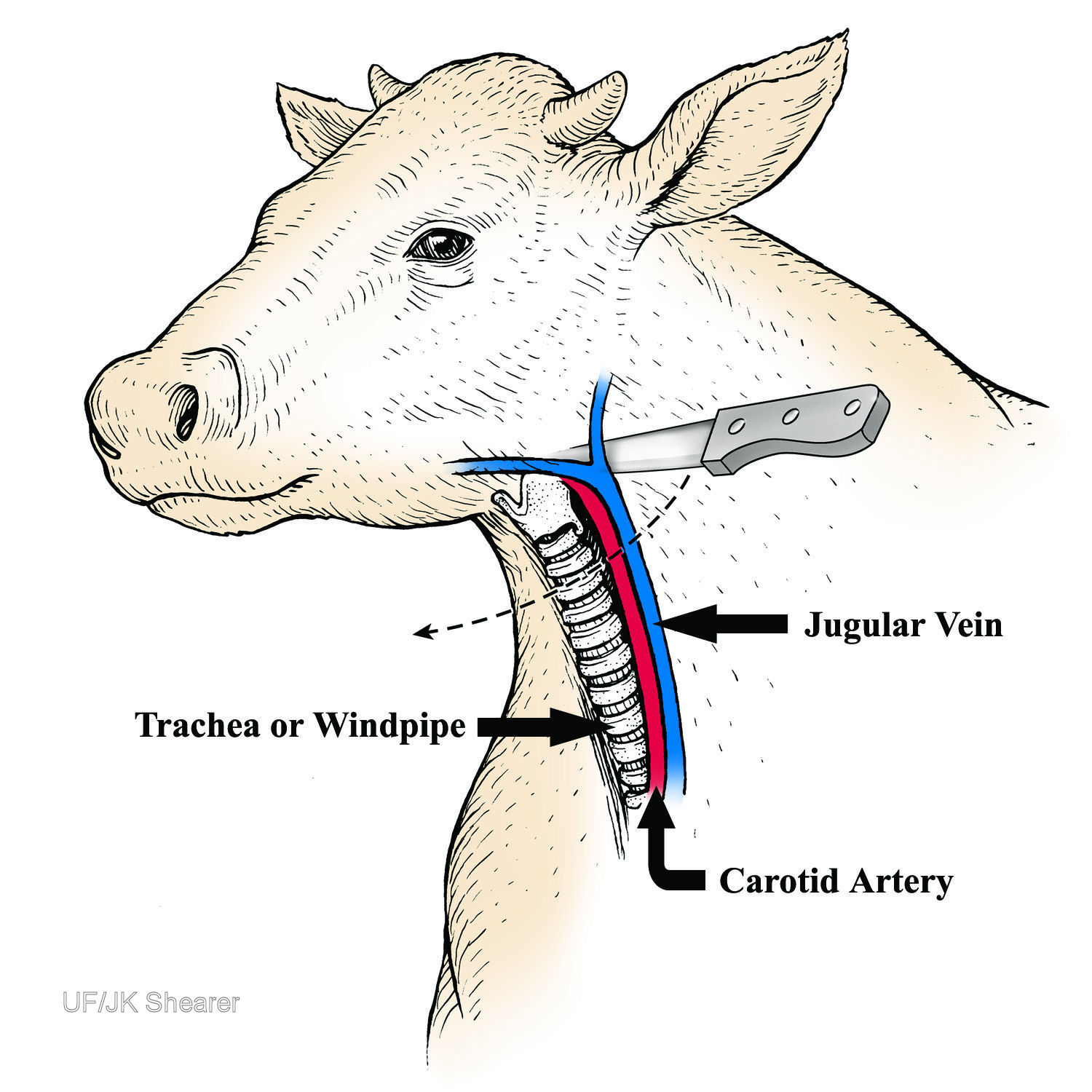Healthy Calf Conference
Follow to stay up-to-date on all Healthy Calf Conference updates. Speaker announcements, sponsorship information, registration announcements, and more.
Euthanasia, or the humane termination of an animal’s life, is a necessary reality of raising livestock. Euthanasia is necessary when a calf becomes ill or injured and treatments to alleviate pain or to treat the illness are ineffective or there is little hope that the animal will recover. Under these circumstances, using an approved method for euthanasia is often the best thing to do for the animal.
When determining whether euthanasia is necessary for a sick or injured calf, consult with your herd veterinarian or use tools and criteria, such as a decision tree developed in consultation with your herd veterinarian, to decide what the next steps are.
Work with your herd veterinarian to create a euthanasia protocol for your farm. Consider factors such as the age and size of cattle on your farm as well as ability to restrain cattle, human safety, and comfort level and training of the staff who will be performing the procedure.
Ensure the protocol includes what to do if an animal cannot move on its own. Unnecessary handling or moving an animal prior to euthanasia must be avoided. Dragging, prodding, or forcing an animal to move in order to facilitate euthanasia should never be done. It is far more humane to bring the method of euthanasia to the animal. This may require you to use different euthanasia methods depending on the condition of the animal or where it is when euthanasia becomes necessary.
One of the most important factors for maintaining animal welfare during euthanasia is to have the euthanasia performed only by trained personnel. This ensures that pain and stress experienced by the animal is minimized. Your euthanasia protocol should list people with the authority to decide if an animal should be euthanized as well as those who are trained to perform the procedure.
Ensure that all staff are trained and able to access euthanasia tools, or that a trained staff person can be reached and tools can be accessed quickly in case of emergency. Euthanasia should never be delayed because a trained staff person or the tools required are unavailable.
By following a veterinarian-developed protocol for euthanasia, the risk of causing pain or distress to the animal is minimized. If you are not comfortable performing euthanasia, ask your herd veterinarian for training or have them perform the procedure.
The only approved methods of euthanasia for calves are:
These methods are approved because, when done properly, they cause minimal pain and distress, render the animal immediately unconscious, and are irreversible. Methods including, but not limited to, air embolism, blows to the head (blunt force trauma), motor vehicle exhaust, bleeding out without proper stunning and electrocution are NOT approved methods for euthanasia of calves. These methods cause pain and suffering.
Euthanasia by lethal injection of barbiturates can only be performed by a licensed veterinarian, and once performed, requires proper carcass disposal to ensure wildlife cannot access the carcass and the chemicals do not leach into the environment. Animals euthanized with barbiturates cannot be consumed by humans or animals.

When euthanizing via gunshot, the gun should be aimed perpendicular to the intersection of two imaginary lines, each drawn from the outside corner of the eye to the center of the base of the opposite horn (or where the horn would be on dehorned animals) – not right between the eyes (see photo 1). The target site and angle are important to ensure immediate unconsciousness of the animal is achieved to minimize pain and distress. The gun should be approximately 30 to 60 centimeters (12 to 24 inches) away from the head. Never hold a gun flush against the head. This could cause the barrel to explode, harming the operator. Proper restraint is necessary to ensure you hit the target the first time. Restraint can include the use of a halter, chemical sedatives, or a livestock chute or gates. The restraint chosen will vary depending on the age of the cattle, disease process, and how temperament and behaviour of the animal.
Firearm safety is extremely important when euthanizing by gunshot to avoid issues such as pass through and ricochet, and ensure the safety of other people in the vicinity and the operator. All persons handling firearms should have safety training and be licensed. A .22 caliber rifle can be used for young calves, but should not be used on older calves or adult cattle. A .22 magnum or larger calibre firearm is much more reliable. A 410 shotgun can be used for young calves, and a 12 or 20 gauge shotgun can be used for older calves or adult cattle. With shotguns a slug, birdshot No. 2, 4, 6 or buckshot can be used.


There are two types of captive bolts, penetrating and non-penetrating. Penetrating captive bolts go through the skull to physically damage the brain. Non-penetrating captive bolts do not enter the brain, but cause unconsciousness due to the force of the bolt against the head. Penetrating captive bolts are appropriate for use on cattle of all sizes, but non-penetrating captive bolts are less reliable on larger animals, so can only be used for young calves. Ensure you select the correct cartridge for the weight of the animal you are euthanizing. Consult the manufacturer’s instructions for more details. When in doubt, select the heavier cartridge.
The target site for captive bolts is the same as the target site for gunshot. Unlike guns, captive bolts need to be held flush against the head when discharged. Therefore, proper restraint of the head is necessary. The animal can be standing or laying in any position that allows you to hold the captive bolt against the head.
Once stunning with a captive bolt has been performed, trained personnel must ensure that the animal is unconscious before applying a secondary step.
Once you have applied a method of euthanasia, immediately check for signs of unconsciousness.
Some signs that indicate that the calf is unconscious include:
Two or more signs should be present to confirm the calf is unconscious. If the calf begins vocalizing, attempts to right itself, lifts its head, or has a corneal reflex, it is conscious. If this occurs, immediately reapply the method of euthanasia, or use a backup method.

Once the animal has been rendered unconscious by the captive bolt, bleed out can occur by severing the carotid arteries and jugular veins located on either side of the neck (see photo 2). The windpipe should also be severed at this time. When the animal is being bled out, you must ensure that all the blood is carefully collected so that it does not contaminate the environment. Once the blood is collected it must be properly disposed of as the blood of an infected calf can spread disease throughout the herd. An alternate secondary method is to pith. Pithing involves placing a rod or pithing tool into the hole created by the penetrating captive bolt and moving it around to further destroy the brain.
Death may not occur immediately, but the animal must remain unconscious until death. You must confirm the calf is dead before attempting to move it. Indicators that can be used to assess whether the animal is dead are:
Both these signs should be present to confirm death, with the absence of any signs of the calf regaining consciousness.
The carcass of the calf, regardless of the method of euthanasia, must be properly disposed of using an approved method as regulated by the Nutrient Management Act, 2002, O. Reg 106/09 Disposal of Dead Farm Animals. This regulation requires that the animal must be disposed of within 48 hours of death by methods such as using a deadstock service, or on farm options such as incineration, composting, burial, disposal vessels, or anaerobic digesters.
Deadstock must be collected and transported within 48 hours of death or the carcass will be rejected by the deadstock collectors. If cattle are disposed of on-farm, traceability regulations require you to report their tag number to the Canadian Cattle Identification Agency within 30 days. Ensure all laws regarding deadstock disposal and record keeping are followed.
Ensure that all euthanasia equipment is cleaned and maintained according to manufacturer instructions then stored securely and safely.
Although reluctance to euthanize a calf is understandable, it is important to note that euthanizing a week too early is better than a day too late. Timely euthanasia prevents the animal from experiencing unnecessary pain and distress. By recognizing that the calf needs to be euthanized and ensuring the veterinarian-developed procedure is performed by trained personnel, the overall welfare of the animal can be maintained.
This project was funded in part through Growing Forward 2 (GF2), a federal-provincial-territorial initiative. The Agricultural Adaptation Council assists in the delivery of GF2 in Ontario.
Follow to stay up-to-date on all Healthy Calf Conference updates. Speaker announcements, sponsorship information, registration announcements, and more.
The Codes of Practice are nationally developed guidelines for the care and handling of farm animals. They serve as our national understanding of animal care requirements and recommended practices.